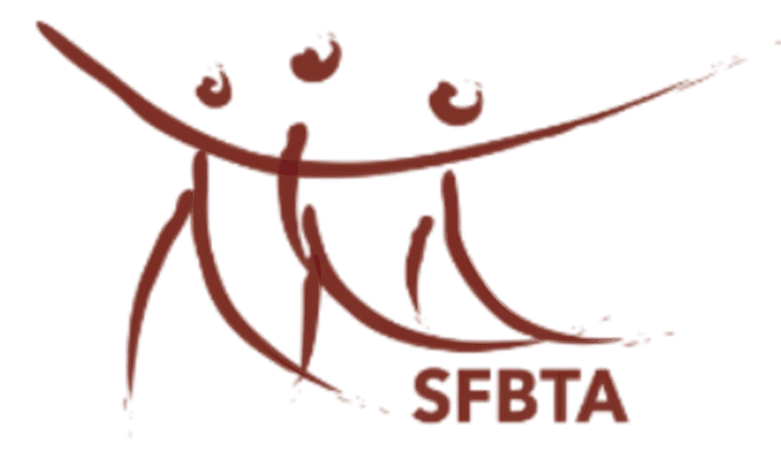SFBT Research List
SFBT Research List
Study purpose: To evaluate teachers’ sense of efficacy, teachers’ evaluation of their relationships with students, and teachers’ assessment of attendance, problem behaviors, and academic outcomes of students participating in a 10-week solution-focused intervention: Working on What Works (WOWW).
Participants: Data were collected on 413 fourth and fifth grade students in public, primarily rural schools and private, primarily urban schools
Methods: Students were randomly assigned to the control group which did not receive the intervention or the experimental group which received the WOWW intervention. Students’ internalizing and externalizing behaviors were measured via a modified version of the Student Internalizing Behavior (Teacher/Staff version) and the Student Externalizing Behavior (Teacher/Staff Version) and student-teacher relationships were measured via the Student-Teacher Relationship Scale- Short Form. Student attendance and academic performance were measured via teachers’ report. Teacher’s self-efficacy was measured via Teachers’ Sense of Efficacy Scale and teachers were asked to rate their classroom’s general performance at baseline and post-test. Data were analyzed in a multilevel model analysis with the intervention condition and control variables (teacher’s teaching experience, class size, WOWW coach, student race, and special education status) as independent variables. Linear regression models were used to examine the effect of WOWW on classroom/teacher-level outcomes.
Results: No significant differences between WOWW and the control group for student internalizing and externalizing behaviors, student-teacher relationships, student academic performance, and teacher sense of efficacy. Students in the WOWW group had significantly fewer absences and teacher classroom performance scores improved significantly more in the WOWW group in comparison to the control group.
Study Design: Randomized experimental posttest-only design
Study Setting: School
Study purpose: To receive expert researcher and client feedback about an intervention manual for a Solution-Focused HIV intervention.
Participants: 3 SFBT experts to provide feedback on the intervention and model and 6 women living with HIV who participated in the intervention and a focus group. The intervention participants ranged in age from 42-61 years old and included 2 females who identified as White and 4 females who identified as African American.
Inclusion criteria: The intervention participants had to be females over the age of 18 and living with HIV.
Methods: Five phases were utilized to develop the intervention manual: (1) manual development; (2) expert feedback; (3) provide the intervention; (4) focus groups with intervention participants; and (5) manual revisions. Semi-structured focus group interviews were analyzed by identifying patterns and themes among participant responses.
Results: Common themes include: (1) accommodating the intervention for the physical and cognitive needs of participants to maintain participation and access; (2) talking about spiritual and relational wellness helps to address relationship dynamics with family members of women living with HIV; (3) supportive relationships among women in the group provided a sense of belonging and encouraged wellness activities; and (4) discussing antiretroviral medications and co-occurring health issues is important in improving the wellness for women living with HIV.
Study Design: Qualitative Study
Study Setting: Case Management Agency
Study purpose: To evaluate the Solution-Focused Wellness for HIV (SFWH) intervention for women.
Participants: 14 women living with HIV who participated (at varying levels) in seven-session, group intervention.
Inclusion criteria: Participants had to identify as female, be living with HIV, and be over the age of 18.
Methods: Data were collected via the 74-item Five Factor Wellness Inventory and HIV-related wellness was measured via biomarkers (e.g. viral load and CD4 T-Cell Lymphocyte counts). Paired samples T-Tests and Chi-square tests were performed to measure change over time in HIV-related wellness from baseline to five-weeks post-intervention.
Results: There was no significant difference in CD4 counts pre- and post-intervention; however, there was a significant difference in viral loads from pre- to post-intervention. Additionally, the results demonstrated that the intervention was associated with significant improvements in multidimensional wellness from pre- to post-intervention.
Study Design: Single Group Pre-Post Test
Study Setting: Case management agency
Study purpose: This single case study designed sought to understand the use of a Solution-Focused eco-systemic approach to support the return to school for one male student who had an acquired brain injury.
Participants: One male participant, 15-years-old.
Inclusion criteria: The male participant acquired a severe brain injury, and when briefly returning to school after the injury, he struggled to cope emotionally and cognitively and had several difficulties in physical abilities including but not limited to speech and language, memory, and concentration.
Method: Single case-study design.
Result: The single participant was successfully reintegrated back into school at the end of the intervention period. There were three key facilitators to returning to school: (1) psychological formulation of the individual’s needs and strengths to support a personalized approach to their reintegration; (2) supporting and educating school staff during the individual’s reintegration; and (3) one-to-one therapeutic work with the individual.
Study Design: Single Case Study
Study Setting: School
Study purpose: A pilot study to examine the applicability of a linguistically adapted SFBT program, implemented by social workers in Chilean primary care.
Participants: Two women and six men between 38 and 60 years of age (n=8) recruited from referrals from medical or paramedical personnel, and self-referrals. Individuals were patients to two primary health clinics in southern Santiago, Chile and presented moderate to severe risk level of alcohol use as measured by the AUDIT.
Inclusion criteria: individuals between 18 and 65 years of age, able to communicate verbally with others, willing to participate in the intervention, and willing to fill out measures forms.
Exclusion criteria: Presented a severe and untreated mental illness such as schizophrenia.
Method: A pilot test of the linguistic adaptation of SFBT by social workers who received training in the brief intervention, single case design with 8 replications.
Analysis: Visual and percentage of non-overlapping data analyses to analyze the results of the program on participants’ alcohol use and other related variables.
Results: Social workers successfully implemented 10 of the 13 SFBT techniques. Participants increased their “percentage of days abstinent,” diminished “consequences of alcohol use,” decreased their “depression index,” and increased their “self-reported well-being.” Exception and coping questions may serve to increase abstinent days and SFBT focus on issues other than alcohol that are important to clients could help to reduce harm on individuals who use alcohol.
Study Design: Single-case AB design with 8 replications (time-series)
Study Setting: Health Clinic
Study purpose: An update on a previously published study, highlighting growth in SFBT field including the publishing of additional experimental designs and studies with a wide variety of populations. Promising results for use of SFBT for improving emotional, behavioral, and interpersonal issues.
Result: SFBT research has grown tremendously over the past 10 years since the publishing of the first article. This article describes and summarizes the status of SFBT as an evidence-based intervention including but not limited to publishing over multiple meta-analyses, randomized controlled trials, and quasi-experimental studies. The current article provides an up-date on the evidence-base of SFBT, showing favorable results on emotional, behavioral and interpersonal issues. This article updates various US national evidence-based registries and clearinghouses as well as provide resources for practitioners on SFBT training.
Study Design: Position Paper
Study purpose: A pilot clinical outcome study used to identify the effectiveness of Solution-Focused Brief Therapy for couples raising a child with Autism Spectrum Disorder.
Participants: 5 married couples at least 18-years-old raising a child with Autism Spectrum Disorder (ASD) between the ages of 4 and 16.
Inclusion criteria: The couple needed to not be receiving couples therapy elsewhere at the time of the study, the child’s score for the Gilliam Autism Rating Scale-3 (GARS-3) needed to indicate an Autism Index score of 55, at least one member of the couple needed to score a 63 or higher on the Outcome Questionnaire 45.2, and at least one member of the couple needed to score a 16 or lower on the Kansas Marital Satisfaction Scale, indicating some degree of marital distress.
Method: Clinical pilot outcome study employing a multiple-baseline design.
Result: Solution-Focused Brief Therapy was delivered once weekly for a total of 6 weeks for all participants. Some participants demonstrated immediate improvements in overall well-being while others showed improvement after participating in a few sessions. SFBT was generally supported as an effective treatment for parents of children with autism, especially for mothers.
Study Design: Multiple Baseline Design
Study Setting: Marriage and Family Counseling

